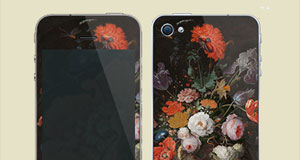Commissioned by the City of Amsterdam, c. 1651;{In a list of the works that Quellinus had ‘made and intended to make for the city of Amsterdam’ for which payments were received in instalments in the period 24 October 1651 to 7 March 1652, the sculptor himself entered the following: _Geboetcheert voor de pompen die op de plaetse sullen staen op elcke pomp vier belden aen malcander aen elck verdint 4 pont --- 48_ [gulden] (modelled for the pumps that will stand in the courtyard, on each pump four connected figures, each earning 4 pounds --- 48 [guilders], see Stadsarchief Amsterdam (hereafter: SAA), archive 5039 (Thesaurie Ordinaris), inv. no. 624, no. 6. Moreover, a similar entry in a list of works for which the city authorities had ‘paid in full’ on 11 April 1652 (no. 4) confirms that Quellinus received a payment of 24 guilders for each of the two sculptures _gebotcheert om op de plaetse vant nieuw stadhuys te stellen, op elcke pomp 4 belden aen malkanderen_ (modelled to be installed in the courtyard of the new town hall, on each pump four connected figures). Both entries, and an entry on the undated list no. 11, refer to this sketch and to the Cimon and Pero ([BK-AM-51-10](https://data.rijksmuseum.nl/20017592)). See K. Fremantle, ‘The Fountains Designed for Van Campen’s Amsterdam Town Hall and Quellien’s Models for Them’, _Album discipulorum aangeboden aan J.G. van Gelder ter gelegenheid van zijn 60ste verjaardag_ (_Utrechtse Kunsthistorische Studiën_ 7), Utrecht 1963, pp. 101-18, esp. p. 102, and Vreeken 1995, p. 49.} from the artist,{K. Fremantle, ‘The Fountains Designed for Van Campen’s Amsterdam Town Hall and Quellien’s Models for Them’, _Album discipulorum aangeboden aan J.G. van Gelder ter gelegenheid van zijn 60ste verjaardag_ (_Utrechtse Kunsthistorische Studiën_ 7), Utrecht 1963, pp. 101-18, esp. p. 104 (note 15): _dewijl zijn werk lootse nu affgebroken wordt dat haer Edele_ [burgemeesters] _sullen laten affhalen de modellen vande beelden die hij ten behoeve dezer Stede gemaeckt heeft_ (while his workshop is being closed, that her Noble [burgomasters] shall have the models of the sculptures that he made on behalf of this City collected). See also H.J. Wiggers, ‘De stad Amsterdam en haar vroegste beeldencollectie’, in M. Jonker et al., _In beeld gebracht: Beeldhouwkunst uit de collectie van het Amsterdams Historisch Museum_, coll. cat. Amsterdam 1995, pp. 60-75, esp. p. 62 (referring to A.W. Kroon, _Het Amsterdamsche stadhuis (thans Paleis), 1625-1700: Zijne geschiedenis naar onuitgegeven officiële bronnen bewerkt_, Amsterdam 1867, p. 138).} transferred to the Town Hall (now Royal Palace) at Dam Square, Amsterdam, 1664;{H.J. Wiggers, ‘De stad Amsterdam en haar vroegste beeldencollectie’, in M. Jonker et al., _In beeld gebracht: Beeldhouwkunst uit de collectie van het Amsterdams Historisch Museum_, coll. cat. Amsterdam 1995, pp. 60-75, esp. pp. 62-64. The models were initially kept in the Thesaurie Ordinaris (Treasury) of the town hall. Around 1700, most were moved to the art cabinet in the _kunstkamer_ (art chamber) on the third floor, see _Wegwyzer door Amsterdam_, Amsterdam (Nicolaas ten Hoorn) 1713, p. 446. From 1768 on, the task of overseeing the models’ preservation was assigned to the Stadstekenacademie (City Drawing Academy), also located in the aforementioned _kunstkamer_. In 1769, academy director Cornelis Ploos van Amstel compiled an inventory of all sculptures in the art chamber. This inventory also included Quellinus’s models, see SAA, archive H. 86.003 (Library), Cornelis Ploos van Amstel, _Notitie van Boetseersels en Pleisterbeelden enz bewaard wordende op de kunstkamer van het stadhuijs der stad Amsterdam_ (January 1769). From November 1796 to April 1806, the Stadstekenacademie was obliged to (temporarily) vacate the town hall art chamber on the orders of the French occupier. During this period, it is not known where the models were stored, though presumably they remained in the town hall, albeit without oversight. In April 1806, the models were moved to the _rariteitenkamer_ (curiosity chamber), also called the Diplomatieke Bibliotheek (Diplomatic Library).} transferred to the Stadstekenacademie (at two or three successive locations), Amsterdam, 1808;{The collection was moved in 1808, when Louis Napoleon took up residence in the town hall. H.J. Wiggers, ‘De stad Amsterdam en haar vroegste beeldencollectie’, in M. Jonker et al., _In beeld gebracht: Beeldhouwkunst uit de collectie van het Amsterdams Historisch Museum_, coll. cat. Amsterdam 1995, pp. 60-75, esp. pp. 67-68. See also SAA, archive 265 (Stadstekenacademie), inv. nos. 1-4 and 6-54.} transferred to the Koninklijke Academie van Beeldende Kunsten (old Exchange of Hendrick de Keyser), Amsterdam, 1821;{H.J. Wiggers, ‘De stad Amsterdam en haar vroegste beeldencollectie’, in M. Jonker et al., _In beeld gebracht: Beeldhouwkunst uit de collectie van het Amsterdams Historisch Museum_, coll. cat. Amsterdam 1995, pp. 60-75, esp. p. 70, referring to SAA, archive 265 (Stadstekenacademie), inv. no. 4 (minutes of 1818-1821).} transferred to the Oude Mannenhuis, Amsterdam 1837;{H.J. Wiggers, ‘De stad Amsterdam en haar vroegste beeldencollectie’, in M. Jonker et al., _In beeld gebracht: Beeldhouwkunst uit de collectie van het Amsterdams Historisch Museum_, coll. cat. Amsterdam 1995, pp. 60-75, esp. pp. 70-71. See also SAA, archive PA 681 (Koninklijke Academie van Beeldende Kunsten), inv. no. 7.} transferred to the Town Hall at the Prinsenhof, Amsterdam, 1878;{H.J. Wiggers, ‘De stad Amsterdam en haar vroegste beeldencollectie’, in M. Jonker et al., _In beeld gebracht: Beeldhouwkunst uit de collectie van het Amsterdams Historisch Museum_, coll. cat. Amsterdam 1995, pp. 60-75, esp. p. 72. See also SAA, archive H. 86.003 (Library).} on loan to the museum, since 1887{See SAA, archive H. 86.002 (Library).}
Bibliography and list of abbreviations for the provenance (pdf)


